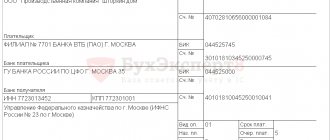Direct and indirect taxes.
If we structure all taxes according to various characteristics, we obtain the following forms of taxes. The main feature here is the method of withdrawal, both from individuals and legal entities.
Direct taxes are well known to all of us - they are withdrawn from part of the income (income tax, tax on the simplified tax system, income tax, etc.), or from the value of certain property (tax on the sale of movable and immovable property, land tax, inheritance tax and etc.).
Indirect taxes are hidden in nature. The well-known VAT to all of us is a prominent representative of an indirect tax hidden in the cost of a product. Every time customers pay for goods in a supermarket, they automatically become payers of this tax. The same applies to excise tax. If we are well aware of the existence of direct taxes, then sometimes we may not even know about indirect taxes! Thus, indirect taxes also fulfill a price-forming mission.
Each of these forms has its own pros and cons for the state. For example, the stability of direct tax revenues to the budget is their main advantage. But the open nature is, on the contrary, a disadvantage, since prerequisites are created for evading their payment (income is hidden, actions are taken with a fictitious tax credit for VAT, etc.) As already mentioned, the hidden nature of indirect taxes makes them less tangible for payers, because it is not always The product indicates which indirect taxes are included in its price. In addition, they play some role in regulating the demand for goods that can be harmful to health (alcohol, tobacco products), because due to the excise tax, the prices for these goods are far from the lowest. Stimulating national production is also the prerogative of indirect taxes.
Domestic goods are much more accessible to consumers than foreign ones due to the absence of customs duties. But the failure to take into account the factor of social inequality in income is an unquestionable disadvantage of indirect taxes, because price increases are most often felt by the low-income segments of the population, while the rich may not even notice the difference. In this regard, one can often observe various programs for the poor - goods for such categories of people are sold at preferential prices, without including indirect taxes.
Tax classification (with examples of Russian taxes)
Tax classification is a systematic, scientifically based grouping of taxes in accordance with homogeneous characteristics. The purpose of tax classification is determined by the needs of a clear organization of work on drawing up and executing the revenue side of the budget, monitoring the receipt of taxes for each source and groups of taxes, keeping records and comparing taxation indicators in different regions of the country, developing a tax strategy, determining the content of certain groups of taxes , their influence on the socio-economic development of society. Classification criteria are objective criteria for the differentiation of taxes, predetermined by the very economic nature of the tax as such. Taxes included in the tax system of the Russian Federation are classified: 1. By the method of withdrawal: - direct - taxes that directly fall on the payer, which cannot be transferred in the sphere of circulation and are associated with the result of financial and economic activities, capital turnover, etc. (enterprise profit tax, income tax, property taxes, etc.) - indirect - taxes on goods and services, established as a premium to the price or determined depending on the size added value, turnover and paid by the end consumer (VAT, sales tax, excise taxes, customs duties, tax on sales of fuels and lubricants) 2. By subject of tax: - from individuals (income tax, property tax of individuals, etc.) - from legal entities (profit tax, property tax of legal entities, etc.) - mixed (advertising tax, contributions to state social extra-budgetary funds, customs duties) 3. By level of government: - federal (VAT, excise taxes, corporate income tax, personal income tax. persons, contributions to the state. social off-budget funds, etc.) - regional (organizational property tax, road tax, sales tax, etc.) - local (land tax, personal property tax, advertising tax, etc.) 4. By purpose: - general - depersonalization of taxes in budget revenues when directing them to expenses (VAT, income tax, etc.) - targeted - taxes are linked to specific types of budget expenditures (road tax, land tax, contributions to extra-budgetary funds, etc.) 5. By source of payment of tax amounts: - cost - taxes included in the cost of production (resource payments, contributions to extra-budgetary social funds, forest tax, etc.) - prices and tariffs (revenue) - taxes included in revenue (these are indirect taxes) ( VAT, sales tax, excise taxes, customs duties) - financial result (advertising tax, corporate property tax, land tax) - income (profit, salary) - taxes on profit or income of legal entities and individuals (enterprise income tax, personal income tax persons, single tax on imputed income) - net profit - taxes and fees paid to the budget at the expense of profits, after payment of income tax (fines, penalties for violation of tax legislation). 6. By object of taxation: - property - resource (rent) - on income - consumption taxes - on certain types of activities, operations 7. By method of calculation: - progressive / regressive - proportional / linear - stepped / fixed 8. By method of taxation : - cadastral / non-cash - declaration / cash 9. According to fiscal needs: - layout - the size is determined based on the needs for financing specific types of expenses (construction of roads, factories, etc.) (there are no such in the Russian Federation) - quantitative - taken into account financially -economic, property capabilities of taxpayers 10. By order of entry into the budget: - assigned - permanently or on a long-term basis assigned to this budget - regulating - coming from a higher budget in order to pay off the budget deficit 11. By order of administration: - generally binding - established by federal legislation and are levied throughout the country (VAT, excise taxes, income tax, income tax, property tax, etc.). - optional - introduced by regulations of the constituent entities of the Russian Federation or local self-government bodies (sales tax, single tax on imputed income).
Federal, regional, local.
The next sign for determining the form of taxes will be the level of the budget into which the proceeds go. In this regard, there are: federal, regional and local taxes.
The Tax Code defines federal taxes as mandatory for payment throughout the Russian Federation. What taxes apply to them?
Regional taxes are obligatory for payment by the subjects of the Federation in the corresponding region. At the same time, the government has the right to revise rates, change the terms of payment of taxes, or cancel them altogether. Regional taxes include: corporate property tax, gambling tax, and transport tax.
According to the regional principle, local taxes have flexibility in terms of establishment, rates and cancellation at the municipal government level and include: land tax, personal property tax. persons, trade fee.
Main characteristics and differences
So, all fiscal payments can be divided into three types: federal, regional and local taxes and fees.
The key difference between these payments is the level of government that sets the basic rules and regulations for applying taxation. That is, if the authority to determine the rate, benefit, period and principles is transferred to the authorities of the constituent entity of Russia, then the payment is considered regional. However, it should be noted that fiscal payments are regulated in the Tax Code of the Russian Federation. That is, the Tax Code of the Russian Federation is the legal basis of the current tax system of the state. This means that municipal authorities, as well as the authorities of a constituent entity of Russia, do not have the right to introduce additional (new) obligations. Their powers include specifying the taxation procedure for existing fiscal levies.
The second difference is the level of the budget (treasury) into which the payment is credited. Thus, taxes and fees by budget level are:
- federal - credited directly to the treasury of the Federation (first level);
- regional - entering the treasury of the subject (second);
- local - transferred to the municipal budget (third).
The third difference is the territorial feature, that is, the territory in which the basic principles of taxation apply. Not the obligation itself, but precisely the procedure for its application.
Thus, obligations of the first rank apply throughout the entire state. The principles, rules and norms enshrined in the Tax Code of the Russian Federation are uniform for implementation throughout Russia.
Features of second-rank encumbrances are established for a specific region. For example, the authorities of one region introduce regional tax breaks, reduce rates, approve reporting periods and advance payments that are mandatory for residents of this region. Consequently, other norms may be adopted in another subject.
For fees of the third, local, rank, the algorithm and features of taxation are valid only on the territory of the municipality. Consequently, unlike local taxes, federal taxes and the procedure for their application cannot be changed at the municipal or regional levels. Below is a closed list of federal, regional and local taxes.
General and special taxes.
If we consider the nature of the targeted use of funds received by the budget, we can determine the following pattern:
General taxes do not have a precisely defined purpose of use, that is, these funds provide comprehensive state expenditures - both current and capital (income tax, personal income tax, VAT, etc.) But special taxes are intended for a specific purpose (industry). For example, previously, funds from transport tax revenues were used exclusively for the repair and construction of roads. Now this tax is already considered general. However, there are regions where, on the initiative of regional authorities, road funds have been created and funds from them go exclusively to the target area - to the development of the road industry. Special ones also include mineral extraction tax, land tax, and water tax.
Personal income tax
Personal income tax is one of the most important taxes paid by individuals. This type of tax refers to federal taxes. It is paid from many types of income of citizens: wages, income from the sale or rental of property, winnings. The tax rate for personal income tax is 13% (for residents of the Russian Federation). The employee does not transfer this tax on his own from the accrued salary; this responsibility is assigned to the employer, since he is entrusted with the function of a tax agent. Employees can see the amount of all deductions from their salaries in the 2-NDFL certificate or in the pay slip.
Proportional, progressive and regressive forms of taxes.
This classification of tax forms arose on the basis of the mechanism of action of rates. Dependence by proportion (proportional taxes) means that the rate does not change in any way depending on changes in income and is set at a fixed value (basically a percentage of income or cost). This principle forms the basis of many modern taxes; for example, an enterprise pays a profit tax of 20% for any amount of profit received.
Progressive taxes suggest that rates change as the size of the taxed item changes, and since the word “progress” means upward movement, it is not surprising that rates only tend to rise as income increases. The same example applies to the tax on vehicle owners: rates increase when the cost of the car is over 1 million rubles.
The regressive tax mechanism works on the principle of inverse proportion: the larger the tax base, the lower the tax. In its pure form, this form of tax is quite difficult to come across, and in general such a relationship seems illogical. However, regressive taxes are designed to stimulate business activity, production growth, the desire to work and bring benefits not only to themselves, but also to the country’s economy. Therefore, in terms of the quantitative ratio of fees, this form can outstrip even the progressive method. In Russia, according to this principle, they are trying to bring workers’ salaries out of the shadows - the larger the salary, the smaller the contributions to the funds.
Types of simplified taxation
The simplified taxation system is the most common system for calculating tax payments among start-up entrepreneurs. The simplified taxation system (STS) has several types, differing in the object of taxation:
- Income minus expenses (in different regions the tax rate is from 5% to 15%). This type of taxation is suitable for those types of activities where there are large costs - up to 80% of profit;
- Income (tax rate is 6%). This method of taxation is beneficial for organizations with small expenses (up to 60% of income).
When switching to a simplified taxation system, an organization must independently select the object of taxation.
Cadastral, by source of taxation, by declaration.
These forms of taxes were formed depending on the payment. For example, the “declaration” form involves submitting a special form of document to the tax service, in which the payer declares his tax obligations (VAT, income tax, etc.).
“At source of payment” means the taxpayer receives income after deducting tax. A classic example is that employees receive their salary “in hand” minus tax withholdings.
The cadastral form differs in that the profitability of the operation is determined using a special register containing information about typical objects. Land tax refers to this form, since it is determined based on the cadastral value of the land.
Thus, the various forms of government taxes are largely related to its main purpose - financing. But the improvement of the tax mechanism in many countries contributes to a certain shift in priorities - it is important not only to withdraw, but also to take care of development, so social policy, the cultural component, ecology and security are taking the same place with the fiscal task.
I also recommend reading:
Sincerely, Anatomy of Business project
Categories:
- Taxes
October 28, 2020 11:42 am
Comments are closed here.
If you liked the published material, share it with your friends:
Their list and characteristics
The main regional taxes, which are necessarily present in each territorial unit, consist of the following deductions:
- corporate property tax;
- transport;
- for the gambling business.
Organizational property tax
It is the main point in the Tax Code and has been in force in the Russian Federation since 1992. In this case, property located within Russia and owned by Russian or foreign organizations is subject to taxation, namely:
- enterprises and institutions that Russian legislation classifies as legal entities;
- branches and divisions that have their own current account;
- foreign and international organizations that own property on the territory of the Russian Federation.
No deductions are made for:
- land plots;
- organizations related to criminal enforcement activities;
- water and other natural resources;
- property under the jurisdiction of federal bodies and used for security activities and ensuring law and order in the Russian Federation.
Some religious associations, as well as organizations for the disabled, law firms, research centers, pharmaceutical enterprises, historical and cultural monuments, and space centers may be exempt from payment completely or have benefits.
The tax is paid annually , the interest rate does not exceed 2.2% , this is the upper limit set by the Tax Code. The remaining nuances are handled by the regional authorities.
Transport tax
In 2002, a new chapter related to transport tax appeared in the Tax Code. Taxpayers in this case are considered to be those in whose name one or more vehicles are registered. In this case, the payment is calculated separately for each type of transport. Payments are made annually .
In this case, the following vehicles are subject to taxation:
- ground transport: cars, buses, motorcycles, etc.;
- water: yachts, boats, motor boats, etc.;
- air: helicopters, airplanes.
Not subject to taxation:
- low power motor boats or rowing craft;
- fishing vessels;
- vehicles of all types that are involved in passenger or freight transportation;
- agricultural machinery that is used for agricultural work;
- transport operated by federal authorities and used for military service;
- ships registered in the international registry.
Rates are determined in accordance with the Tax Code.
For vehicles equipped with engines, payments are calculated taking into account the power of each specific engine. In towed vessels, the capacity is taken into account, which is calculated in tons. For other types of transport, the tax is calculated based on the number of vehicle units. Legal entities calculate tax payments independently.
Individuals do not calculate the tax themselves; this procedure is formalized at the tax authority at whose address the vehicle was registered. Before June 1, an individual must receive the necessary information regarding the payment amount. Based on the received document, payment is made.
Regional authorities have the right to influence the base rate, which was determined by the Tax Code, by decreasing or increasing it, but not more than five times. The timing of the reporting period and the payment procedure are also considered at the regional level; the form of the declaration and the deadline for its submission are also established here.
Gambling tax
All organizations associated with the gaming business are required to pay fees to the regional budget.
The Tax Code provides for the following gambling facilities for which deductions must be made:
- gaming tables;
- slot machines;
- bookmaker's offices;
- betting cash desks.
When installing at least one of the above objects, their owner is required to register with a regional tax organization (no later than 2 days after installation). Rates are adjusted at the regional level:
- Gaming tables - from 25,000 to 125,000 rubles .
- Vending machines - from 1,500 to 7,500 rubles .
- For a betting or bookmaker's office - from 25,000 to 125,000 .
If no adjustments have been made at the regional level, then tax payment is calculated according to the Tax Code of the Russian Federation according to the lower threshold of the above list. The tax is charged monthly . The payer must calculate the amount of the payment independently; the tax return is submitted no later than the 20th day of each month following the reporting month. Payment is made at the place of registration.
If a slot machine or other object was not registered on time, its owner will be charged a fine of three times the amount of the tax, and if this happens again, the fine will increase six times.
Since 2009, establishments that do not have permission to organize gambling activities have ceased to operate on the territory of the Russian Federation.
It is advisable to collect the above taxes at the regional level, because these deductions make it possible to form a stable financial basis for the regional economy.
You can find out more detailed information about these payments in the following video:
Federal taxes and fees
Mandatory payments, the payment of which must be made to the center's budget, are established in Art. 13 NK. These include:
- VAT;
- all excise taxes provided for in the Russian Federation;
- personal income tax;
- corporate income tax;
- MET;
- water tax;
- fees associated with the use of wildlife objects, as well as objects of aquatic biological resources;
- all types of state fees.
All these payments are classified at the national level due to the fact that decisions on their establishment are related to the implementation of federal fiscal and economic policies. It is assumed that centralization will allow achieving the most effective management in these areas.
The main principle of this part of the tax system is the uniformity of rules throughout the state. Subjects residing in the territory of any region or municipality in Russia make mandatory payments, the main elements of which (rate, object of taxation, billing period, base, calculation procedure, as well as payment and its terms) have identical characteristics.
There is one exception to this rule. They concern a system of special tax regimes for persons meeting certain criteria. Their list is given in Art. 18 NK. Such regimes include the single agricultural tax, simplified tax system, UTII, patents, as well as production sharing agreements.
Powers of federal authorities
Despite the fact that the basis of the tax system in Russia involves division by level, the center has very broad powers. In addition to establishing all elements of federal payments, he is given the right to adopt basic rules regarding taxes and fees at other levels.
The obligatory basis for the emergence of obligations for their payment is the inclusion of the latter in the tax code. The basic document defines some of the mandatory elements of taxes and fees (all of which are not within the powers of regional and local authorities).
All laws adopted by the State Duma must be in the nature of amendments to the Tax Code.
Powers of state and municipal authorities to establish mandatory payments
The current legislation establishes the basic principle by which acts establishing the obligation to pay taxes are adopted. This is possible only on the basis of relevant decisions of representative bodies of municipal and state authorities.
There are 2 main reasons for this. The first is political and lies in the fact that members of representative bodies receive a mandate of trust from citizens in elections. The second reason is the importance of ensuring a simple and transparent tax system, which would be hindered by a large number of departmental acts establishing these payments.
In contrast to the general hierarchy of acts, which provides for the subordination of regional acts to federal ones, and municipal acts to regional ones, the Tax Code introduces a 2-tier structure.
A special feature of such a system is that the basic parameters of payments are determined at the federal level, and the rest - at the regional and local level.
At the same time, the legislation of the constituent entities of the Russian Federation and decisions of municipalities on tax issues do not provide for the subordination of the latter to the former.








